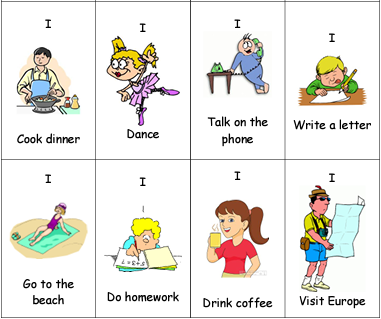This is a no preparation activity you can do to revise virtually any subject for controlled sentence formation practice with young learners, though I suppose if you wanted to, elementary adults might also like this game!
Materials
All you need is a whiteboard and markers in at least 2 different colours. If you havenet got access to a whiteboard, you could easily do it with a piece of paper and pens too.
How to play
Draw a grid on the board. Usually at least 6 squares accross and down, but more can be good for longer games. In this example, I played using the subject of animals and actions, so on the x-axis I selected some animals that had different abilities (flying, walking, swimming, etc.) and on the y-axis I put the actions (jump, run, swim, bite, etc). We were practicing can/can’t, so making sentences such as, “the crocodile can bite” or “the frog can’t fly”.
You could easily put body parts on the y-axis and use sentences with have/haven’t got (e.g. “the dog hasn’t got feathers”) or comparatives… put animals on both axes and write adjectives in the squares so they have to make a comparison between the animals using the adjective given (e.g. “the elephant is bigger than the snake”) or have them practise positive/negative/question forms… the possibilities are endless.
Students must make a sentence using the items on the axes that intersect on the square they want to win. If they give a correct sentence, they win the square.
Simple! You can play this game with groups from 2 upwards.
Why I use it
It works really well because it is fun, and the students practise controlled sentences with repetition to build confidence and better pronunciation too.
The best way to understand how this game works is to watch it in action on my Tiktok or instagram accounts, where I have posted a video of the activity in my own classroom.


